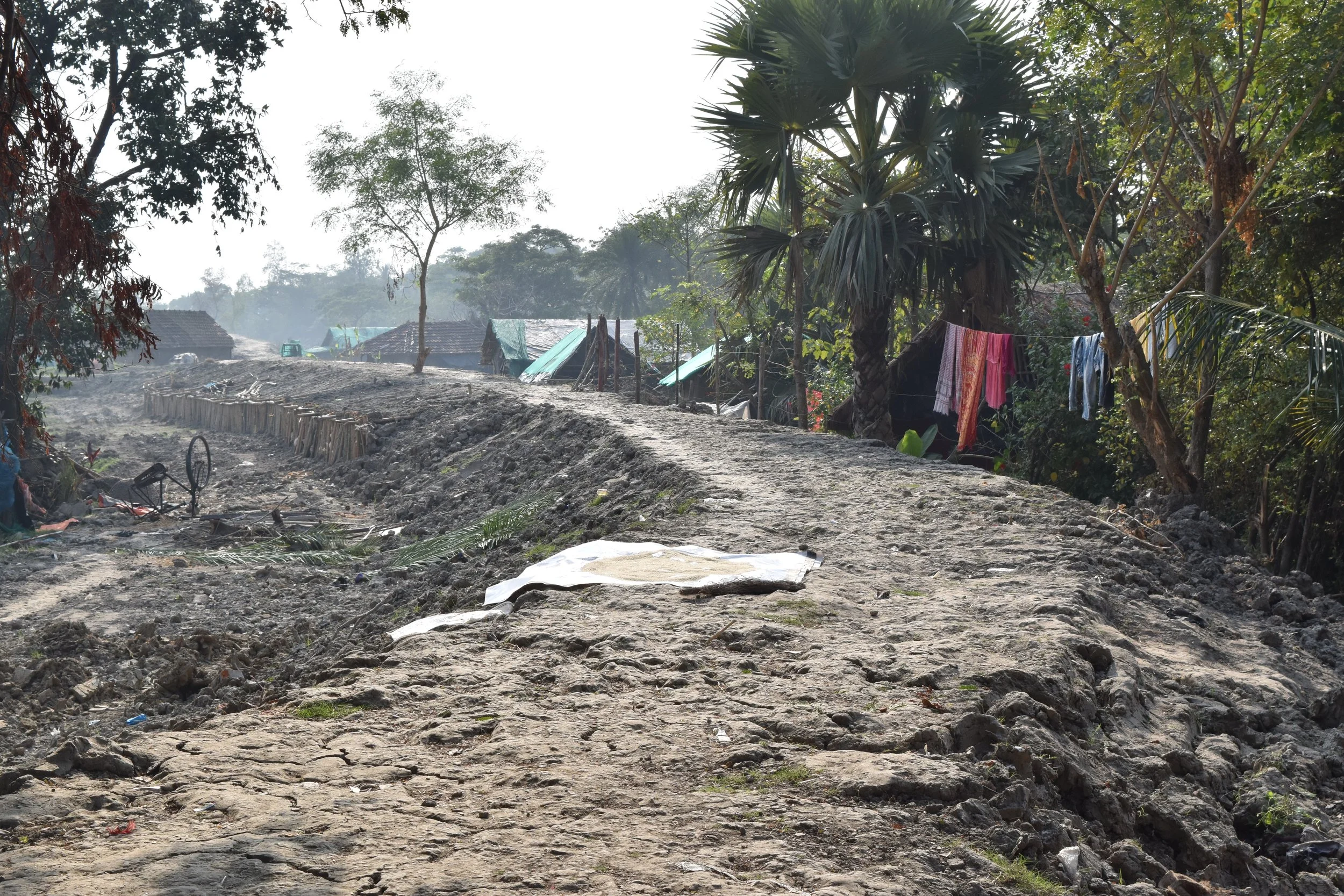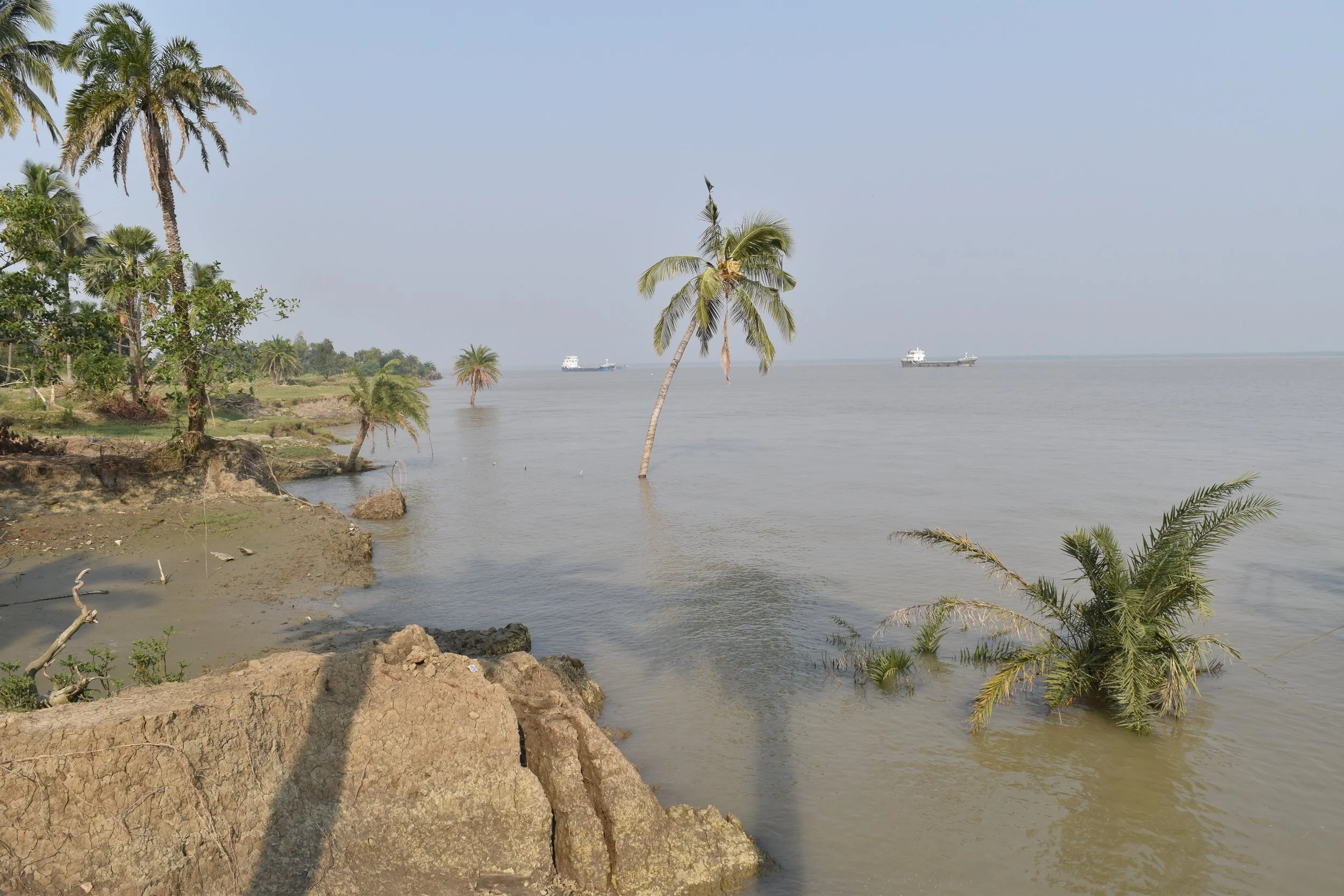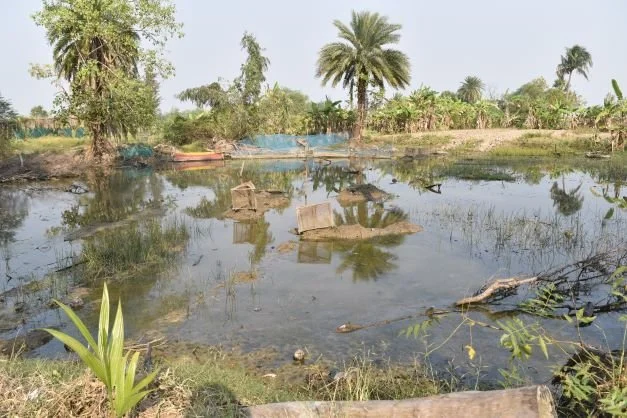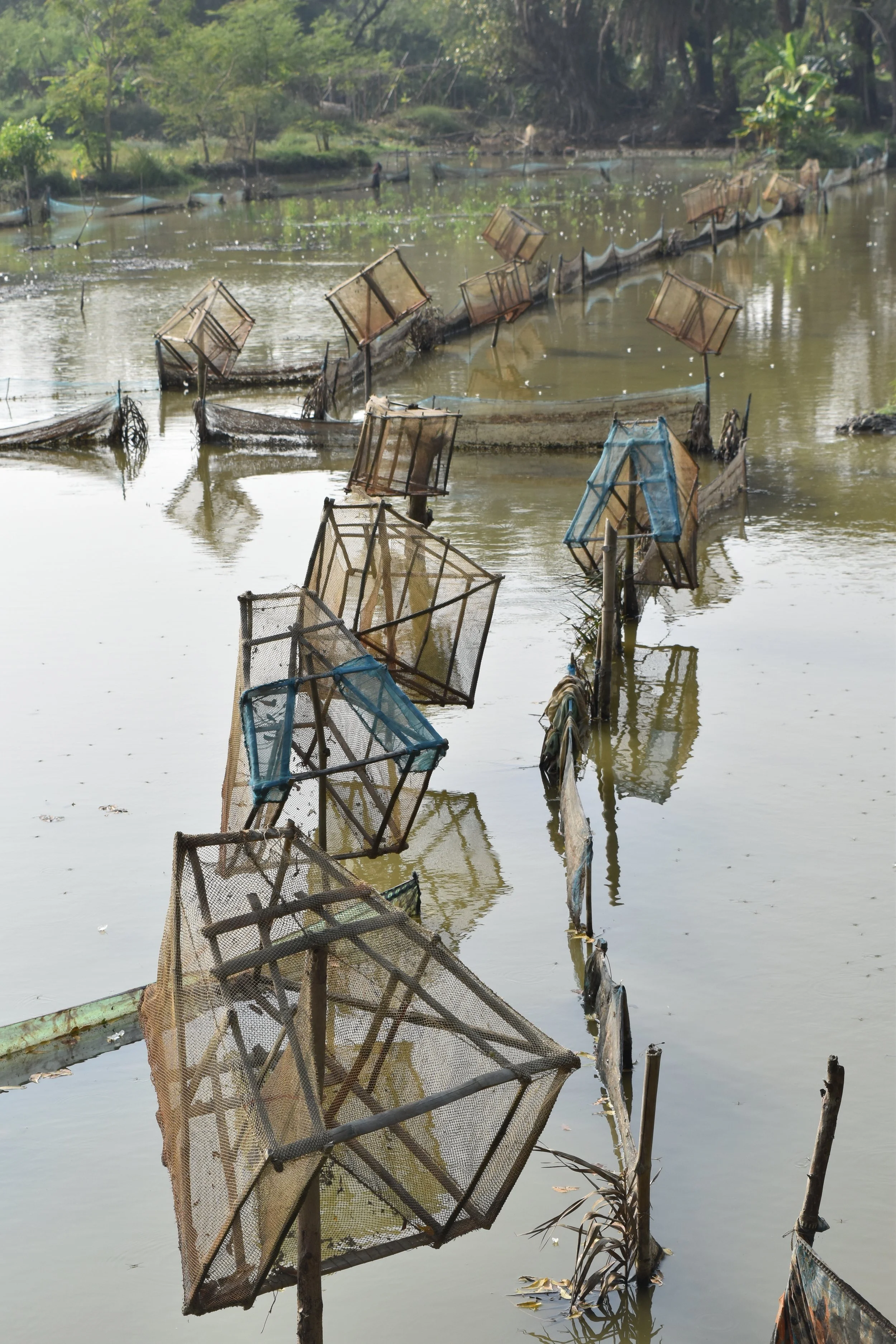Existential Crisis: Tales of Ghoramara Island dwellersin the Indian Sundarbans
Anirban Mukhopadhyay, Indrajit Pal and Neshma Tuladhar
Living on the edges (Photo: Indrajit Pal)
“But here, in the tide country, transformation is the rule of life: rivers stray from week to week, and islands are made and unmade in days… Could it be the very rhythms of the earth were quickened here so that they unfolded at an accelerated pace?”
― Amitav Ghosh, The Hungry Tide
After a hiatus when we resumed our field visit to the Sundarban delta after the COVID-19 restriction were lifted, it was surprising and painstaking to observe, how the Ghoramara island dwellers are facing the fury of the natural shocks amid COVID- 19. Adaptation is inevitable for the survival of the community facing consistent climate-induced hazards. The accelerated erosion and rise in the sea level have been acting like a giant; devouring vast acres of land. Indeed, the water is agonizing, thus, displacing millions of people across the globe. Although the scientific community is still asserting the exact rate of sea-level rise, they have determined its impacts. It primarily includes coastal threats in the form of coastal island submerging and flooding, marine water intrusion into the groundwater and the surface water soil erosion, and so on. These impacts are resulting in alteration of the global coastal niche.
Mother Nature is ringing her warning bell. The sound is traversing far and wide. Can we still afford to evade these sounds? This escalated rise in the sea level is a direct consequence of climate change. Sea-level rise has been taking place over several years due to the accelerated influence of global warming, a consequence of the greenhouse effect. The latest Intergovernmental Panel on Climate Change (IPCC) Assessment Report of the United Nations, 2021, identifies the persistent rise of sea level as a major determinant of the worldwide climate crisis. Evidently, this erosion of coastal lands into the seas has created countless ‘environmental refugees’ (a common term used for those inhabitants migrating from their long-term dwelling places due to the detrimental effect of natural disasters). Thus, the coastal habitation has turned out to be a liability where the sea-level rise is predicted to bring about global devastation incurring huge compensations by the next century.
For example, numerous people in the South Pacific and south-east Asia are facing a “fight or flight” scenario. Several researchers anticipate that by 2050 almost 300 million environmental or climate refugees will exist throughout the world. The observations during our visit to Ganga-Brahmaputra-Meghna (GBM) river delta in the Indian Sundarban Delta were quite alarming. Ghoramara Island, one of the fragile and most exposed pieces of land on the Hooghly River estuary has been facing erosion and saltwater intrusion for several decades. The island dwellers are traumatized by seeing the fate of Lohachara and Suparivanga Island, which were once located in the river Hooghly in West Bengal, India, were completely engulfed by the sea, in the 1980's. The size of the island reduced to almost less than half of its original size, between 1990 to 2017 Ghoramara Island reduced from 6 km2 to 3.5 km2. The researchers have predicted that the entire island may disappear by 2050.
Erosion of Ghoramara Island (Photo: Indrajit Pal)
Looking into the details, some of the main villages within Ghoramara Island such as Khasimara, Lakshmi Narayanpur, and Khasimarachar have already gone underwater. The other remaining villages of the island like Hathkhola, Baghpara, Raipara, etc. are experiencing rage of a bloating sea level. Historically, about 40,000 people used to reside on Ghoramara Island, which has been reduced to around 5000. The impact of cyclone ‘Amphan’ in 2020, exacerbated by the effects of the COVID-19 pandemic, has worsened the living conditions of the island’s remaining inhabitants. Owing to such natural disasters as well as anthropogenic interventions, a dozen islands surrounding the Hooghly estuary region and the adjoining Sundarban delta region of West Bengal are under severe threat of being wiped out from the very existence.
Vanishing lands of Ghoramara over the years (created by Anirban Mukhopadhyay. Indrajit Pal, and Neshma Tuladhar)
The major occupations of the inhabitants in Ghoramara island include rice, betel cultivation, fishing, and prawn-seed accumulation. Consistent environmental crises compelled the residents of Ghoramara Island to migrate and abandon their birthplace and livelihood due to the massive flooding and loss of land to the sea.
Amidst such distressful situations, they have been migrating to other neighboring islands like Sagar and Mousumi, just like helpless refugees. Those who are still residing on these islands adapting to all the adverse environmental conditions and harsh living conditions are facing a major challenge of ‘saltwater intrusion'.
Devastated aquaculture ponds due to saltwater intrusion Ghoramara (Photo: Indrajit Pal)
A priori knowledge of the residents indicated it might require almost 5 years before rice can be re-cultivated in the fields affected with saline water during annual flooding events. Although the State government of West Bengal has taken several initiatives to relocate many individuals of Ghoramara Island to the neighboring Sagar Island, the frequent floods have made the situation more challenging for the state administration to reach out to the impacted community to supply food and other essential aids, during these flooding events. For instance, in June 2016, Ghoramara Island remained waterlogged for one whole week. Though air-based rescue and food supply are often the convenient ways of providing help during the disaster, it is expensive, time-consuming, and only day-time operations can be conducted, thus making it difficult to reach out to the affected mass. But the question remains, what is the long-term solution to the land loss and people migrating on an account of it? The Government of India, in 2022, allocated a very limited share in its union budget for the Union Ministry of Science and Technology. Compared to the broader reach of science and technology application and development, this allocation is certainly not sufficient to mitigate such massive environmental losses, wherein in some cases these climate events are severely downplayed. Following these situations, the question arises in our minds,
“Are the governments making proper allocations needed for conducting enough scientific research and investing well enough for developmental projects for mitigating such frequent disasters?”
The hard reality is that the inhabitants leaving the island, still lack proper homes or socially compatible neighborhoods and are thus confronting an acute 'identity crisis'. The Ghoramara islanders, living below the poverty line, with limited access to electricity, proper means of transport, and suitable mobile and internet access. They are combating these environmental predicaments and are feeling as if they are losing this battle gradually.
When the community is struggling for the basic amenities for daily living and livelihood, education is a luxury for them. Ghoramara island dwellers may not be aware of the term ‘climate change’, however, they are well versed with the sea-level rise and how the violent sea water like 'hungry monsters' are eating up their lands as well as their hope for survival.
Although the catastrophic consequences of climate change and global warming are not explicitly visible within the common masses, it has been consistently shaping the topography and demography of the fragile landmass. So, it is vital for all of us to gain awareness regarding such occurrences as soon as possible. As the famous proverb goes, “Time and Tide wait for none”, the concerned administrative departments need to investigate these matters more seriously. Living Deltas Hub is an interdisciplinary research hub targeted to address the socially equitable and acceptable solutions for a sustainable and resilient delta. It has become a dire need of the hour to address global climate change ushering several adverse consequences. Common awareness coupled with proper initiatives by the government (national, state and local) may bring about some days of hope in the coming days.
Fishing Nets laid in marshes in Ghoramora.( Photo: Indrajit Pal)





